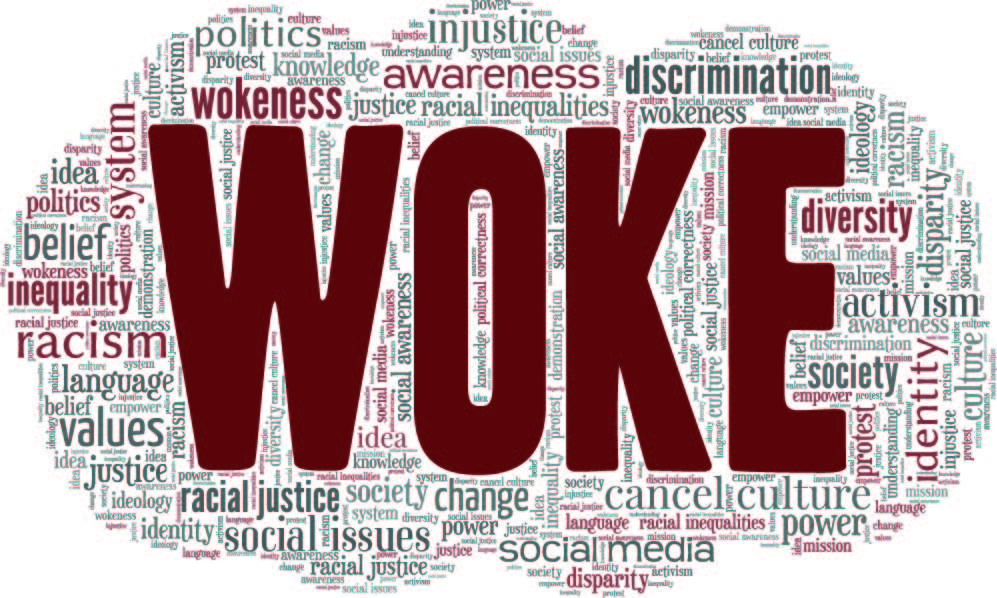By Daniel Butcher
Americans pay the highest healthcare costs in the world. With renewed scrutiny on the U.S. health insurance industry and third-party administrators (TPAs) of health benefits in the wake of UnitedHealthcare CEO Brian Thompson’s murder, many people are looking for fixes to a broken private healthcare system. Given that healthcare reform is unlikely to come from Washington, employers are arguably the only ones with leverage to reduce costs and minimize denials.
AOM Scholar Jeffrey Pfeffer of Stanford University cited the example of a former insurance insider whom Montana hired to save the state’s benefit plan for its 30,000 employees and their families. She pushed back against TPAs and health-insurance executives who were keeping healthcare costs high, proving that bargaining to lower healthcare prices works.
“In Montana, a woman named Marilyn Bartlett, who’s literally a grandmother, was hired by the state of Montana to fix the healthcare benefits situation for the main Montana government employees and retirees, and she held their vendors accountable for spending, denied claims, and denied services,” Pfeffer said. “She basically saved a fortune and provided better service by holding the vendors accountable.”
A 2018 article published by ProPublica and NPR revealed that “Bartlett understood something the state officials didn’t: the side deals, kickbacks and lucrative clauses that industry players secretly build into medical costs. Everyone, she’d observed, was profiting except the employers and workers paying the tab.
“In her view, employers should be pushing back against the industry and demanding that it justify its costs. They should ask for itemized bills to determine how prices are set. And they should read the fine print in their contracts to weed out secret deals that work against them.
“The way health care works in America, most employers cede control of health care costs to their health insurers, to the hospitals that treat their employees and to the companies they pay to manage their benefits. The costs are a dense thicket that few employers feel equipped to hack through. So, they don’t.”
Pfeffer said he’d like to see more organizations leverage such insights to improve healthcare services and outcomes for their employees.
“What is going on at the moment is that most employers are not measuring the delivery of healthcare services, and most employers are not holding their vendors accountable,” he said.
“The Blues and Anthem and UnitedHealthcare are just doing what the employers are permitting them to do, and the employers should take much more proactive steps to clean this up.”
-
Daniel Butcher is a writer and the Managing Editor of AOM Today at the Academy of Management (AOM). Previously, he was a writer and the Finance Editor for Strategic Finance magazine and Management Accounting Quarterly, a scholarly journal, at the Institute of Management Accountants (IMA). Prior to that, he worked as a writer/editor at The Financial Times, including daily FT sister publications Ignites and FundFire, Crain Communications’s InvestmentNews and Crain’s Wealth, eFinancialCareers, and Arizent’s Financial Planning, Re:Invent|Wealth, On Wall Street, Bank Investment Consultant, and Money Management Executive. He earned his bachelor’s degree from the University of Colorado Boulder and his master’s degree from New York University. You can reach him at dbutcher@aom.org or via LinkedIn.
View all posts
Up next....
Pay Transparency Can Push Reward Inequities Under the Table
By Daniel Butcher
Performance-based pay—including merit-based salary increases and bonuses—can be complicated by pay transparency rules that make the details known to coworkers, according to Academy of Management Scholar Peter Bamberger of Tel Aviv University.
A reaction to that can lead to pay compression—when wages for low-skilled or low-performing workers and wages for high-skilled or high-performing workers move closer together—or an increase in requests for deals with special perks, also called idiosyncratic deals or i-deals. I-deals are non-standard work arrangements that individual employees negotiate to get remote work or flexibility, training opportunities, special assignments, and even performance benchmarks that would trigger bonuses. I-deals are often used to reward high-performing candidates and employees who have specialized skills in the hopes of retaining them long-term.
“You can imagine, if you’re a star performer and your bonus or merit-based raise is lower than it’s been before, you’re likely to think about leaving that organization and going to work somewhere else—and that’s exactly what some economists have found, that where we have pay compression, the star performers actually pick up and leave,” Bamberger said. “I recently published a paper that also shows the same thing, that pay compression very quickly leads to star performers’ departure.”
So what can organizations’ leaders do?
“What we find is that employees don’t necessarily push for more money; they make their requests for other types of rewards, primarily benefits as part of what we call idiosyncratic deals, things like the number of days per week that they can work from home or the number of weeks per year that they can work from Hawaii,” Bamberger said. “There’s a large body of literature on i-deals in management, and they include various types of benefits packages.
“What we find using data from about 120 organizations in China is that where pay is more transparent, the differentials in the pay of higher and lower performers are more compressed,” he said. “Perhaps because such a situation could drive higher performers to look for alternative employment, when pay was more transparent, employers rewarded the higher performers in other, less observable ways using these idiosyncratic deals. If fact, higher performers asked for these types of deals, and in 50% of cases where they ask for it, they got it.
“What’s actually happening is that transparency is shifting the pay differential from where it can be seen, annual raises and bonuses, to those types of rewards where it’s not transparent, that is, idiosyncratic deals.”
-
Daniel Butcher is a writer and the Managing Editor of AOM Today at the Academy of Management (AOM). Previously, he was a writer and the Finance Editor for Strategic Finance magazine and Management Accounting Quarterly, a scholarly journal, at the Institute of Management Accountants (IMA). Prior to that, he worked as a writer/editor at The Financial Times, including daily FT sister publications Ignites and FundFire, Crain Communications’s InvestmentNews and Crain’s Wealth, eFinancialCareers, and Arizent’s Financial Planning, Re:Invent|Wealth, On Wall Street, Bank Investment Consultant, and Money Management Executive. He earned his bachelor’s degree from the University of Colorado Boulder and his master’s degree from New York University. You can reach him at dbutcher@aom.org or via LinkedIn.
View all posts
Up next....
Young Heavy Drinkers in Non-STEM Jobs Earn More Money
By Daniel Butcher
There is no meaningful correlation between levels of alcohol consumption and compensation among early-career professionals working in roles focused on science, technology, engineering, and mathematics (STEM). But heavy drinking is associated with higher pay for non-STEM professionals who are recent college graduates.
Academy of Management Scholar Peter Bamberger of Tel Aviv University said that he and colleagues have researched levels of alcohol consumption and compensation of STEM professionals versus those working in non-STEM fields.
“We were looking at the link between consumption patterns and income growth in the initial years of employment after graduating from college, and surprisingly, what we found is a positive relationship between drinking and income growth in non-STEM roles,” Bamberger said.
“The findings are actually capturing the dynamic that, if you’re not in a STEM job and you want to move up in the organization, you need to engage in these social practices that often revolve around alcohol, and the more you do that, the higher your growth in income is going to be,” he said.
That finding is—at least in part—tied to the prevalence of non-STEM professionals working in sales, marketing, distribution, customer-service, and business-development roles who routinely partake in adult beverages while meeting with clients and prospects.
“A lot of non-STEM people are engaging in marketing and sales and support in building and maintaining relationships with customers,” Bamberger said. “In STEM roles, they’re working in a lab or in front of a computer terminal coding, so there’s less of a role for alcohol as a basis for increasing your salary—drinking is not going to do a hell of a lot for your career if your role isn’t client-facing, right?
“But early-career non-STEM salespeople who drink on the job with clients may be more likely to get promoted and rewarded financially,” he said. “That was the logic behind the research, and that’s what we actually found.”
However, there’s an obvious caveat. Bamberger noted that recent research shows that daily alcohol intake—even in moderate amounts—increases drinkers’ risk of health issues.
“There have been a couple of studies that have come out recently that that directly contradict the line that’s been pushed a lot by a lot of the alcoholic-beverages companies, which is that having some wine with your meal every day is going to prolong your life—it’s healthy,” Bamberger said.
“You’re best off not drinking any alcohol whatsoever, not so much because of its implications on mental health, but rather largely because of its implications with respect to alcohol as a carcinogen, specifically as a leading cause of esophageal cancer,” he said.
“Many younger employees nowadays recognize the risks in drinking; a lot of young people are actually picking up on those problematic implications of drinking alcohol even at the lowest levels and understanding that health risk.”
-
Daniel Butcher is a writer and the Managing Editor of AOM Today at the Academy of Management (AOM). Previously, he was a writer and the Finance Editor for Strategic Finance magazine and Management Accounting Quarterly, a scholarly journal, at the Institute of Management Accountants (IMA). Prior to that, he worked as a writer/editor at The Financial Times, including daily FT sister publications Ignites and FundFire, Crain Communications’s InvestmentNews and Crain’s Wealth, eFinancialCareers, and Arizent’s Financial Planning, Re:Invent|Wealth, On Wall Street, Bank Investment Consultant, and Money Management Executive. He earned his bachelor’s degree from the University of Colorado Boulder and his master’s degree from New York University. You can reach him at dbutcher@aom.org or via LinkedIn.
View all posts
Up next....
Why Retirees Change Their Alcohol Consumption
By Daniel Butcher
Whether people increase or decrease the amount of alcohol they drink after retirement depends on a range of factors, including what role and industry they retire from.
Academy of Management Scholar Peter Bamberger of Tel Aviv University said that he and colleagues studied the implications of general work-related transitions on health and well-being, with a particular focus on subjects’ behavior with regard to drinking alcohol, before and after retirement.
“We actually started with people as they move towards retirement, and we did a 10-year study,” Bamberger said. “The research was finding mixed effects of retirement on alcohol consumption; some studies found that retirement is a great way to address your drinking problems, because you’re often removing people from a high-risk environment where people around them drink a lot.
“But other studies were finding that people go into retirement and move into a retirement community and happy hour starts at noon,” he said.
Bamberger’s and colleagues’ question was, ‘Is retirement good or bad with regard to alcohol consumption or misuse?’ They were looking at various factors that determine when a person’s level of drinking goes in one direction and when it goes in the other direction.
“A simple finding is, if you’re coming out of a high-risk occupation, for example, iron workers, people who build skyscrapers—this is an occupation that has its roots with very heavy drinking communities, so if you joined that occupation, at least in the past, you were likely to adopt those patterns, or you wouldn’t stay in the occupation,” Bamberger said. “So retiring from that is obviously going to be beneficial, because you’re taking yourself out of a social context of high alcohol consumption.”
But there are other variables to consider, including relationships with friends, family, and spouses. A best practice for retirees is keeping busy with hobbies, volunteerism, or even some part-time work, any activity aimed at staying engaged and connected and ensuring a continuing sense of self-worth and contribution.
“We looked at some of the factors that are associated with retirement, like financial stress and marital strain, with one member of a couple working the other one not, and we can find implications there as well for drinking,” Bamberger said. “The routine is disrupted; there’s more free time for one partner in the relationship but not the other.
“There’s a vast array of moderating and conditioning factors that determine when retirement has one implication—more drinking—versus another—less drinking,” he said. “Retirees who plan how to structure their time post-separation from work tend to have better health outcomes.
“Overall, work-related transitions can be difficult for people, and our current research has aimed at exploring the mental-health implications of other such transitions, including for students and soldiers transitioning into career employment for the first time.”
-
Daniel Butcher is a writer and the Managing Editor of AOM Today at the Academy of Management (AOM). Previously, he was a writer and the Finance Editor for Strategic Finance magazine and Management Accounting Quarterly, a scholarly journal, at the Institute of Management Accountants (IMA). Prior to that, he worked as a writer/editor at The Financial Times, including daily FT sister publications Ignites and FundFire, Crain Communications’s InvestmentNews and Crain’s Wealth, eFinancialCareers, and Arizent’s Financial Planning, Re:Invent|Wealth, On Wall Street, Bank Investment Consultant, and Money Management Executive. He earned his bachelor’s degree from the University of Colorado Boulder and his master’s degree from New York University. You can reach him at dbutcher@aom.org or via LinkedIn.
View all posts
Up next....
Why One-Size-Fits-All Diversity Training Fails to Deliver
By Daniel Butcher
The more customized and personalized in-office training sessions are, the more effective they tend to be, and that’s especially true for diversity training, according to Academy of Management Scholar Quinetta Roberson of Michigan State University.
“We’ve all had different experiences; we all have different backgrounds,” she said. “Taking that into consideration, our starting point might be different in terms of the things we need to learn in training—somebody might need it to be more knowledge-based, whereas maybe another person is more emotion-oriented and needs to learn how not to be so reactive.
“Organizational leaders might say, ‘This sounds like a hell of a lot to customize—we have a 10,000-person organization, so how can we customize diversity training for each individual employee?’ but it’s mainly about designing for a wide range of people with different frames of reference and learning styles to improve the return on your training investment,” Roberson said. “A lot of companies buy training off the shelf, and they say, ‘This person, this competitor, or this company in our industry uses this consultant or this diversity-training program.’
“I guess it works for some of them, because they’ve been using it for years, but that doesn’t mean that it’s tailored to address your people and your culture.”
The big-picture takeaway that Roberson stressed is the important of developing flexible, customizable diversity-training models—or working directly with people who do develop diversity training and learning in a way that suits the organization’s purposes.
“Diversity training should not be a plug-and-play one-size-fits-all approach and just hoping that it’ll address all of the organization’s issues,” Roberson said.
“If leaders are spending this money, and if the organization’s people are spending time in this training, then they want to ensure that they’re getting bang for their buck—some return on their investment—and that is going to be something that’s useful and tailored to their people and their culture,” she said.
-
Daniel Butcher is a writer and the Managing Editor of AOM Today at the Academy of Management (AOM). Previously, he was a writer and the Finance Editor for Strategic Finance magazine and Management Accounting Quarterly, a scholarly journal, at the Institute of Management Accountants (IMA). Prior to that, he worked as a writer/editor at The Financial Times, including daily FT sister publications Ignites and FundFire, Crain Communications’s InvestmentNews and Crain’s Wealth, eFinancialCareers, and Arizent’s Financial Planning, Re:Invent|Wealth, On Wall Street, Bank Investment Consultant, and Money Management Executive. He earned his bachelor’s degree from the University of Colorado Boulder and his master’s degree from New York University. You can reach him at dbutcher@aom.org or via LinkedIn.
View all posts
Up next....
Connect the Dots from Training to Learning
By Daniel Butcher
Employee training is most effective when leaders and trainers integrate and reinforce learning objectives and key concepts throughout sessions and encourage participants to apply the new knowledge in their roles.
Academy of Management Scholar Quinetta Roberson of Michigan State University said that pre- and post-training elements are just as important as the training session itself.
“We talk about letting people set their own goals like, ‘This is what I want to get out of the training’ or ‘This is how I want to progress through it,’ because that’s part of that act of learning and being personally responsible in the training,” Roberson said.“In the post-training environment, what happens a lot is that people who were in diversity training are excited—‘I learned this, and I met some cool people,’ etc.
“But the manager says, ‘I need you to do XYZ; get back to work—I missed you for this time you were gone,’ and so work piles up and they’re expected to jump right back into work and so don’t have an opportunity to apply what they’ve learned,” she said.
“So having managers or leaders who actually work with their employees to set goals for how they’re going to use their training in their job or building some of those into their performance evaluation help employees to feel that it’s not just something they went through that was a waste of time.”
Giving participants the opportunity to share and actually have responsibility for sharing, such as a train-the-trainer feedback forum and asking people to share what they’ve learned with colleagues and be subject-matter experts on something that was covered during the training session is a best practice, Roberson said.
“Those kinds of things at least make sure that what they learned in the training is not forgotten and tossed to the side but rather it’s actually pulled into their work,” she said. “And it helps the employees make the connection between what they learned in the training and what they actually have to do in the work environment.”
-
Daniel Butcher is a writer and the Managing Editor of AOM Today at the Academy of Management (AOM). Previously, he was a writer and the Finance Editor for Strategic Finance magazine and Management Accounting Quarterly, a scholarly journal, at the Institute of Management Accountants (IMA). Prior to that, he worked as a writer/editor at The Financial Times, including daily FT sister publications Ignites and FundFire, Crain Communications’s InvestmentNews and Crain’s Wealth, eFinancialCareers, and Arizent’s Financial Planning, Re:Invent|Wealth, On Wall Street, Bank Investment Consultant, and Money Management Executive. He earned his bachelor’s degree from the University of Colorado Boulder and his master’s degree from New York University. You can reach him at dbutcher@aom.org or via LinkedIn.
View all posts
Up next....
Why Many Big Brands Reneged on Diversity Commitments
By Daniel Butcher
In November 2024, Walmart joined other major corporations such as automakers Toyota and Ford Motor Co. in scratching its diversity, equity, and inclusion (DEI) initiatives in the face of threatened boycotts. Walmart announced that it had pulled out of The Human Rights Campaign Corporate Equality Index, which gave priority treatment to suppliers based on racial or gender diversity, and ended support for a racial equity center established after a police officer killed George Floyd in 2020.
Those decisions come in the wake of the U.S. Supreme Court’s 2023 decision ending affirmative action in college admissions, which has emboldened conservative groups to pressure companies to turn their backs on their DEI commitments. For example, Trump adviser Stephen Miller’s America First Legal group has sued companies with DEI initiatives and programs focused on helping Americans of diverse racial and ethnic groups.
Academy of Management Scholar Quinetta Roberson of Michigan State University recalled that she was confused and saddened when John Deere & Co., Tractor Supply Company, and other companies announced that they were scaling back their DEI initiatives in response to criticism and boycott threats from a conservative influencer.
“For those who recognize the value of DEI, it’s perplexing that a non-shareholder could wield such influence over corporate decision-making,” Roberson said. “However, this response reveals a deeper issue: The vulnerability of these firms’ DEI efforts suggests they were never a meaningful part of their mission or strategy.
“Instead, these initiatives were likely performative and transactional, lacking true integration into the companies’ business strategy and operations,” she said. “Unsurprisingly, such superficial approaches to attracting, engaging, and retaining key talent leaves companies exposed to both vulnerability and scrutiny.”
-
Daniel Butcher is a writer and the Managing Editor of AOM Today at the Academy of Management (AOM). Previously, he was a writer and the Finance Editor for Strategic Finance magazine and Management Accounting Quarterly, a scholarly journal, at the Institute of Management Accountants (IMA). Prior to that, he worked as a writer/editor at The Financial Times, including daily FT sister publications Ignites and FundFire, Crain Communications’s InvestmentNews and Crain’s Wealth, eFinancialCareers, and Arizent’s Financial Planning, Re:Invent|Wealth, On Wall Street, Bank Investment Consultant, and Money Management Executive. He earned his bachelor’s degree from the University of Colorado Boulder and his master’s degree from New York University. You can reach him at dbutcher@aom.org or via LinkedIn.
View all posts
Up next....
Why the Meanings of DEI, CRT, and Woke Have Been Warped
By Daniel Butcher
As the political pendulum swings, ideas and policies that were once uncontested and niche become controversial and mainstream. Often, terms used to define academic discourse are redefined by politicians and pundits.
For example, Academy of Management Scholar Quinetta Roberson of Michigan State University said that terms such as diversity, equity, and inclusion (DEI), critical race theory (CRT), and woke have been removed from their original context and weaponized to support people’s political ideologies.
“When people use terminology like woke [in a disparaging sense], you’ve already told me everything I need to know, because it is not a scholarly construct—it is not its intended meaning; they’re using it in a different way,” Roberson said. “They’ve removed its context and significance and politicized it.
“Also, people are equating woke strategies with DEI, and if you unpack that, their conceptualization of DEI becomes primarily about race and maybe a little bit about LGBTQ, but it’s race and ethnicity primarily,” she said. “You don’t hear about it when people are talking about gender, veteran status, or all of the things that are protected categories like disability.
“It becomes this dog whistle for why the speaker doesn’t like certain things about how race is discussed.”
Opinions differ on why that is the case. But repurposing language has long history among political movements. Sometimes, it’s simply a way to deflect uncomfortable topics of conversation or debate.
“There are some people who consider words like equity to mean that some people get a bigger slice of a fixed pie—some people are going to get ahead and some people are not,” Roberson said. “If they think about diversity training, in their mind, that means that some people are going to be made to feel bad about how others have been treated unfairly.
“It’s this conflict-management strategy, where they say, ‘Let’s not talk about it at all—some people had it bad years ago, but we are a post-racial society,’” she said.
“If people use certain terminology, I already know where they sit, and am less likely to engage in a debate with them, because I know that they’re going on opinion or rhetoric rather than on evidence.”
-
Daniel Butcher is a writer and the Managing Editor of AOM Today at the Academy of Management (AOM). Previously, he was a writer and the Finance Editor for Strategic Finance magazine and Management Accounting Quarterly, a scholarly journal, at the Institute of Management Accountants (IMA). Prior to that, he worked as a writer/editor at The Financial Times, including daily FT sister publications Ignites and FundFire, Crain Communications’s InvestmentNews and Crain’s Wealth, eFinancialCareers, and Arizent’s Financial Planning, Re:Invent|Wealth, On Wall Street, Bank Investment Consultant, and Money Management Executive. He earned his bachelor’s degree from the University of Colorado Boulder and his master’s degree from New York University. You can reach him at dbutcher@aom.org or via LinkedIn.
View all posts
Up next....
Diversity Trainees Need a Mindset Shift to Learn and Change
By Daniel Butcher
A key to effective diversity training is to inspire a shift in trainees’ mindset so that they’re willing to engage with the material and discuss it with fellow participants, then—crucially—apply what they’ve learned by putting into practice in the workplace.
Academy of Management Scholar Quinetta Roberson of Michigan State University said that she and colleagues have thought a lot about what they can do to create a new model for diversity training.
“We asked ourselves, ‘How can we do this in a way that people can actually use it?’ and so we thought about some individual or trainee personas so that participants experience what has happened in organizations and how to address those situations,” Roberson said. “You have somebody who is apprehensive and is thinking, ‘I don’t want to go through this; I don’t want to engage because I don’t want anybody yelling at me’—maybe they’re conflict-averse, and they just don’t want to be part of that sensitive conversation.
“At same time, you have trainees who are very zealous, somebody who thinks, ‘I know everything, and I could basically teach this training myself,’ and their motivation and learning is also stifled because they’re already thinking, ‘I got this’—they don’t necessarily feel like there’s anything for them to learn,” she said. “So we wanted to create this diversity-training model that’s applicable to everybody.
“Regardless of whether somebody is resistant or 100% gung-ho, how do you get that person engaged? How do you get them to into the proper mindset for the training and wanting to learn and engage and, most importantly, use it once they get back into the work environment?”
-
Daniel Butcher is a writer and the Managing Editor of AOM Today at the Academy of Management (AOM). Previously, he was a writer and the Finance Editor for Strategic Finance magazine and Management Accounting Quarterly, a scholarly journal, at the Institute of Management Accountants (IMA). Prior to that, he worked as a writer/editor at The Financial Times, including daily FT sister publications Ignites and FundFire, Crain Communications’s InvestmentNews and Crain’s Wealth, eFinancialCareers, and Arizent’s Financial Planning, Re:Invent|Wealth, On Wall Street, Bank Investment Consultant, and Money Management Executive. He earned his bachelor’s degree from the University of Colorado Boulder and his master’s degree from New York University. You can reach him at dbutcher@aom.org or via LinkedIn.
View all posts
Up next....
Diversity Words vs. Action
By Daniel Butcher
Plenty of leaders talk the talk about their belief in diversity, equity, and inclusion (DEI), but fewer actually walk the walk by setting specific objectives and investing sufficient resources to make significant improvements.
Academy of Management Scholar Quinetta Roberson of Michigan State University said that for organizations to truly earn the boost to their reputation that investing in a DEI program is likely to deliver, they must demonstrate a commitment, beyond just issuing press releases or making public statements.
“You often find that there are organizations that will express a commitment to DEI; you’re rarely going to find an organization that says, ‘We hate DEI; we’re not going to anything related to DEI; it doesn’t make sense for our organization,’ although you will have organizations do so on occasion,” Roberson said.
For example, in June 2024, Tractor Supply Company issued a statement that the organization will “no longer submit data to the Human Rights Campaign…stop sponsoring nonbusiness activities like pride festivals and voting campaigns, eliminate DEI roles and retire our current DEI goals while still ensuring a respectful environment, and withdraw our carbon emission goals and focus on our land and water conservation efforts.”
Why?
Tractor Supply Company pointed to customer feedback.
“In a way, they’re saying that those issues are not important to them anymore, so they’ve decided what they think is important to their customer base and their other stakeholders,” Roberson said. “But a lot of times you find organizations [whose leaders] hear about DEI and say, ‘We should probably do it,’ but they have limited knowledge of what that means for their part of the business and they don’t really give it deep thought about how to do it.
“They also don’t think about the demonstration of commitment to DEI; they just say things like, ‘We believe in an equitable workplace, and we believe in an inclusive workplace,’ but then when it comes time to do it, they go and look to see what everybody else is doing,” she said. “And there’s this normative effect, where they say, ‘We probably should have diversity training, employee resource groups, and some kind of outreach,’ but they pick and choose from the menu of diversity practices without thinking about what the end state is and what they want their DEI program to look like.
“And it’s perfectly fine for an organization to say, ‘We’re not really trying to change things; we just want to look good,’ because having a good reputation is an outcome that can be a driver of organizational action, but they also have to realize that if that’s all they’re doing and if people are unhappy or disengaged and they leave, or they’re having trouble recruiting, they shouldn’t be surprised, because they’re literally just expressing a commitment to DEI; they’re not demonstrating a commitment to it or trying to change their environment in any way.”
-
Daniel Butcher is a writer and the Managing Editor of AOM Today at the Academy of Management (AOM). Previously, he was a writer and the Finance Editor for Strategic Finance magazine and Management Accounting Quarterly, a scholarly journal, at the Institute of Management Accountants (IMA). Prior to that, he worked as a writer/editor at The Financial Times, including daily FT sister publications Ignites and FundFire, Crain Communications’s InvestmentNews and Crain’s Wealth, eFinancialCareers, and Arizent’s Financial Planning, Re:Invent|Wealth, On Wall Street, Bank Investment Consultant, and Money Management Executive. He earned his bachelor’s degree from the University of Colorado Boulder and his master’s degree from New York University. You can reach him at dbutcher@aom.org or via LinkedIn.
View all posts
Up next....
A Check-the-Box Approach Diminishes Diversity Training’s Value
By Daniel Butcher
Most large organizations have diversity training for employees, but only a few actually have diversity, equity, and inclusion (DEI) objectives. Far too many organizations think of DEI as a check-the-box compliance exercise rather than a way to boost employee performance and well-being. But organizations that prioritize DEI reap benefits, according to Academy of Management Scholar Quinetta Roberson of Michigan State University.
Roberson acknowledged that there is little quantitative data to support the effectiveness of diversity training in organizations. A notable exception, however, is McKinsey’s 2023 “Diversity Matters Even More” report, which found a “39% increased likelihood of outperformance for those in the top quartile of ethnic and gender representation versus the bottom quartile.” In addition, McKinsey found that the performance of companies lacking diverse representation is likely to be 30% lower on average than their more diverse competitors.
“Part of the problem is that a lot of DEI training is implemented and used from a compliance perspective, so if there are any problems, leaders send people to do diversity training, so it gets rid of the vulnerability for the organization, rather than thinking about what diversity training was originally designed for and intended to be,” Roberson said. “It’s to change attitudes and behavior.
“People’s attitude to DEI is very sticky, because by the time they go through diversity trading at work, they’re who they’re going to become as people—they’re like adults, fully formed individuals,” she said. “So saying that you’re going to change their attitudes is a tall order for something that may be two hours or four hours a day at the most.
“Research on active learning says, in order for training to be effective, people have to be involved and engaged in their own learning process—I can’t come to you and say, ‘You’re going to take X, Y, and Z,’ but that doesn’t mean you’re going to be engaged in it or motivated to learn.”
-
Daniel Butcher is a writer and the Managing Editor of AOM Today at the Academy of Management (AOM). Previously, he was a writer and the Finance Editor for Strategic Finance magazine and Management Accounting Quarterly, a scholarly journal, at the Institute of Management Accountants (IMA). Prior to that, he worked as a writer/editor at The Financial Times, including daily FT sister publications Ignites and FundFire, Crain Communications’s InvestmentNews and Crain’s Wealth, eFinancialCareers, and Arizent’s Financial Planning, Re:Invent|Wealth, On Wall Street, Bank Investment Consultant, and Money Management Executive. He earned his bachelor’s degree from the University of Colorado Boulder and his master’s degree from New York University. You can reach him at dbutcher@aom.org or via LinkedIn.
View all posts












